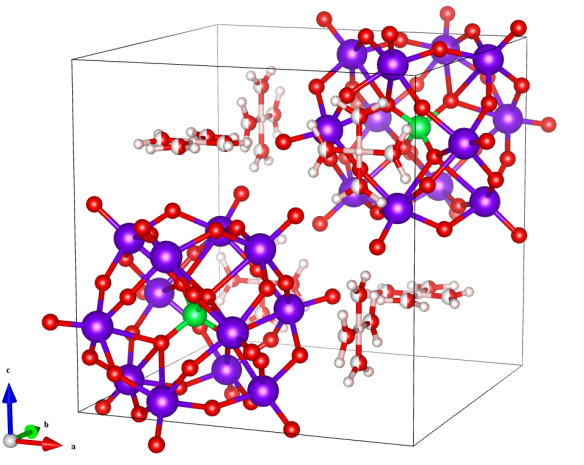Keggin your pardon, ma'm – the structure of a heteropoly acid
What does it look like?

Dodecatungstophosphoric acid hexahydrate. Phosphorus atoms are shown in green, tungsten in purple, oxygen in red, and hydrogen in pink. Image generated using the VESTA (Visualisation for Electronic and STructual Analysis) software http://jp-minerals.org/vesta/en/
What is it?
A heteropoly acid is an acid whose anion (negatively charged part) is made up of multiple metal oxide units built around a 'heteroatom', such as phosphorus. This one is called dodecatungstophosphoric acid hexahydrate, with chemical formula (H5O2+)3(PW12O403-). As you can see, this is a bit more complicated than your average acid, and the structure of the anion was not known until the 1930s, when J. F. Keggin worked it out using X-ray diffraction. This class of anions has since been known as Keggin ions.
The anions self-assemble in an acidic solution into the structure shown above. The phosphorus (P) heteroatom is tetrahedrally bonded to four oxygen atoms, which are enclosed by a tungsten (W) oxide cage. The water molecules and acidic protons fill up the spaces between the anions. Various other elements can be substituted for P and W, giving ions with different structures and properties. They can be used as catalysts for processes such as the hydration of hydrocarbons to alcohols.
Where did the structure come from?
This update on Keggin's original 1933 crystal structure was determined in 1977 by G. M Brown et al. and can be found in the Crystallography Open Database (#1008010). They used a combination of X-ray and neutron diffraction, which is why the hydrogen atoms are so well resolved – neutrons are much better than X-rays at seeing hydrogen!






